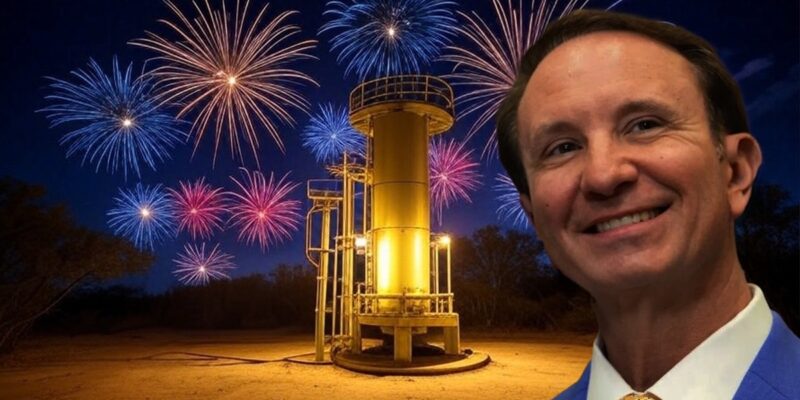Last Friday, Congressman Troy Balderson introduced federal legislation building on Louisiana’s landmark law. The measure takes the same common-sense approach: prioritizing American-made energy, reducing reliance on adversarial nations, and ensuring that “green” energy policy reflects economic and scientific reality.
Governor Landry had urged exactly this kind of action from Washington. When he signed Act 462, he called on Congress to adopt a national energy security strategy built around America’s abundant hydrocarbons – particularly natural gas and nuclear. His argument was simple: energy security is national security, and no country should be dependent on supply chains that run through Beijing, Moscow, or child-labor camps in the Congo.
The new federal bill answers that call.
A Return to Reality in Energy Policy
For too long, federal energy policy has been guided by slogans rather than science and economics. Policymakers in Washington have subsidized unreliable energy sources, ignored full life-cycle costs, and allowed critical infrastructure to depend on foreign materials produced under appalling labor and environmental standards.
Louisiana broke that mold. Act 462 directed state agencies to consider affordability, reliability, and domestic sourcing when evaluating energy projects. It mandated a new method to calculate the cost of energy that includes the hidden expenses of foreign supply chains – like child labor, environmental destruction, and geopolitical vulnerability. And it treated hydrocarbons such as natural gas not as an enemy of the environment, but as an ally of prosperity and innovation.
The federal legislation now mirrors those principles. It redefines “green” and “clean” energy to include not just intermittent renewables but also natural gas and nuclear power – resources that provide stable, dispatchable power without the economic and moral costs of dependence on foreign critical minerals.
An Abundance Waiting to Be Used
America’s natural gas reserves are among the largest in the world, yet federal policy has often treated them as a liability. Governor Landry challenged that mindset, arguing that America’s abundant hydrocarbons are a strategic advantage to be leveraged, not a problem to be managed.
By unlocking domestic production, the U.S. can achieve three vital goals: lower costs for consumers, greater resilience for the electric grid, and stronger national security. Every cubic foot of gas produced in Louisiana, Texas, or Ohio displaces energy that would otherwise come from countries that do not share our values. Every pipeline and LNG terminal built here strengthens our economy and weakens our adversaries.
The Louisiana model recognizes this interconnected truth. The federal version now before Congress brings that logic to the national stage.
Leading by Example
Louisiana’s success story demonstrates what happens when energy policy is grounded in reality. Since passing Act 462, the state has attracted new manufacturing investments, expanded LNG exports, and secured thousands of high-paying energy jobs. Businesses value predictability and affordability – two qualities that hydrocarbon energy delivers.
Governor Landry’s message to Congress was clear: Build energy policy around American resources, American workers, and American values. Representative Balderson’s introduction of this new federal legislation proves that message was heard.
A New Energy Consensus
The debate over energy is no longer between “green” and “dirty.” It’s between the real and the imaginary. The real path to clean, affordable, reliable energy lies in embracing the resources beneath our feet – using innovation, not ideology, to reduce emissions and expand opportunity.
By adopting a new framework, Congress is taking a crucial step toward restoring balance, security, and common sense to national energy policy. The era of energy dependence and self-inflicted scarcity can end – if Washington has the will.
Louisiana showed the way. Now it’s time for Congress to finish the job.
Cameron Sholty is the Executive Director of Heartland Impact, the advocacy arm of The Heartland Institute.
Advertisement
Advertisement

